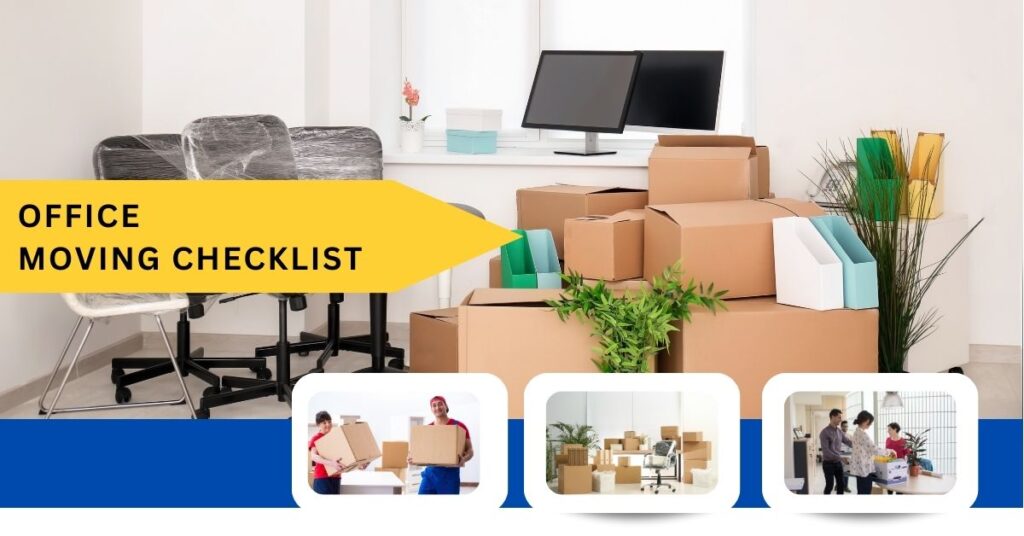Are you gearing up for an office relocation? Moving to a new office space can be an exciting opportunity for growth, but it also comes with its fair share of challenges. From coordinating logistics to ensuring a smooth transition for your team, proper planning is essential for a successful office move. To help you navigate this process with ease, we’ve compiled the ultimate moving offices checklist. Follow these steps to streamline your Office relocation and make your move a seamless experience for everyone involved.

1. Develop a Timeline:
Start by establishing a clear timeline for your office move. Determine your desired move-in date and work backward, setting milestones for each stage of the relocation process. Allow ample time for packing, transportation, and setup to avoid last-minute stressors.
2. Create a Budget:
Moving offices can incur unexpected expenses, so it’s essential to create a comprehensive budget to guide your relocation efforts. Factor in costs such as moving services, packing supplies, furniture purchases, and any necessary renovations or upgrades to your new space.
3. Assign Responsibilities:
Delegate tasks among your team members to ensure that every aspect of the office move is covered. Designate a relocation coordinator to oversee the process and communicate regularly with staff to keep everyone informed and engaged.
4. Notify Stakeholders:
Inform clients, vendors, and other stakeholders about your upcoming office relocation well in advance. Update your contact information on your website, email signatures, and marketing materials to minimize disruption to your business operations.
5. Evaluate New Space Requirements:
Assess the layout and functionality of your new office space to determine any necessary adjustments or upgrades. Consider factors such as office layout, furniture requirements, technology infrastructure, and amenities to ensure that your new space meets the needs of your team.
6. Plan IT and Communication Setup:
Coordinate with your IT department or service provider to transfer your technology infrastructure to the new office location seamlessly. Ensure that internet connectivity, phone systems, and other essential services are set up and tested before the move to minimize downtime.
7. Organize Packing and Labeling:
Develop a systematic approach to packing and labeling your office belongings to streamline the unpacking process. Use color-coded labels or a digital inventory system to categorize items by department or function, making it easier to locate and unpack essential items upon arrival.
8. Coordinate Logistics:
Arrange for professional moving services or enlist the help of a reliable moving company to transport your office furniture, equipment, and supplies to the new location safely and efficiently. Schedule loading and unloading times and provide clear directions to ensure a smooth transition.
9. Update Address and Contact Information:
Update your business address and contact information with relevant authorities, including the postal service, utility providers, banks, and insurance companies. Notify clients, vendors, and service providers of your new address to prevent any disruptions to communication or deliveries.
10. Conduct a Post-Move Evaluation:
Once the move is complete, conduct a post-move evaluation to assess the success of the relocation process and identify any areas for improvement. Solicit feedback from staff members to gain valuable insights and ensure that future office moves are even more seamless.
Conclusion:
By following this comprehensive moving offices checklist, you can minimize stress, maximize efficiency, and ensure a successful transition to your new office space. With careful planning and coordination, your office relocation can be a positive experience that sets the stage for continued growth and success for your business.
Remember, preparation is key, so start planning early and enlist the support of your team to make your office move a smooth and successful endeavor.
Frequently asked questions (FAQ)
1. What is the ideal timeline for planning an office move?
Answer: It’s best to start planning your office move at least 6-12 months in advance. This allows ample time for coordinating logistics, notifying stakeholders, and addressing any unforeseen challenges.
2. How can I minimize downtime during the office move?
Answer: To minimize downtime, plan your move during off-peak hours or weekends. Additionally, consider staggered relocation of departments and ensure that essential services such as internet and phone lines are set up in advance.
3. What should I do with unwanted furniture and equipment during the move?
Answer: Consider donating or recycling unwanted furniture and equipment to reduce waste and declutter your new space. Alternatively, you can explore options for selling or repurposing items to minimize disposal costs.
4. How can I ensure the safety and security of sensitive information during the move?
Answer: Prioritize the security of sensitive information by implementing strict protocols for handling and transporting confidential documents. Consider using encrypted storage devices and hiring reputable moving companies with a track record of confidentiality.


